Introduction to the World of Snowboarding
Snowboarding, a dynamic and exhilarating winter sport, has diversified into various specialized types, with freeride and all mountain snowboards at the forefront. This comprehensive guide embarks on an explorative journey to differentiate these two popular styles, aiming to enhance the understanding and experience of snowboarding enthusiasts worldwide. The nuances and specifics of each type are dissected to provide a clear and detailed comparison, catering to the needs and curiosity of both novice and seasoned snowboarders.
Defining Freeride Snowboards
Freeride snowboards are the quintessence of adventure for backcountry enthusiasts. Characterized by their longer length and directional shape, they are engineered for optimal stability and control in a diverse range of snow conditions. This section delves into the unique attributes and design elements that define freeride snowboards. Emphasizing their suitability for off-piste adventures, we explore how these boards cater to the demands of riders seeking exhilarating and challenging snowboarding experiences, focusing on performance, maneuverability, and adaptability in varied terrains and snow types.
All Mountain Snowboards Explained
All mountain snowboards are the epitome of versatility in the snowboarding world. Designed to excel across an array of conditions and terrains, they stand as the preferred choice for riders who revel in a diverse snowboarding experience. This segment breaks down the key features and capabilities of all mountain snowboards. We discuss their adaptability, highlighting how they balance performance in both groomed runs and off-piste challenges. Whether carving down slopes or tackling powder, these boards offer a balanced and dynamic ride, making them an ideal choice for snowboarders who enjoy versatility and exploration.
Side-by-Side Comparison: Freeride vs All Mountain
In this comparative analysis, freeride and all mountain snowboards are juxtaposed to illuminate their distinct characteristics and applications. This evaluation considers aspects such as flexibility, shape, and performance in different snow conditions. By contrasting these elements, we aim to provide a clear understanding of each board's strengths and ideal use scenarios. This comparison is invaluable for riders making informed decisions about their snowboarding gear, aligning their choices with their preferred riding style, and the conditions they most frequently encounter on the slopes.
The Best Terrains for Freeride Snowboards
Freeride snowboards shine brightest in specific terrains, particularly in backcountry and off-piste areas. This section focuses on where these boards demonstrate their exceptional capabilities. Ideal for deep powder and rugged terrains, freeride boards are crafted to handle steep descents and challenging conditions with ease. We delve into the characteristics that make these boards a perfect match for adventurers seeking thrilling rides away from groomed trails. Whether navigating through trees or conquering steep chutes, these boards offer the precision and performance needed for extreme snowboarding adventures.
All Mountain Snowboards: A Jack of All Trades
All mountain snowboards are renowned for their versatility, providing a well-rounded experience across various terrains. In this part, we explore how these boards cater to a broad spectrum of snowboarding activities. From groomed runs to light powder, all mountain boards are designed to perform reliably. Their adaptability makes them a popular choice among riders who enjoy exploring different aspects of snowboarding, including freestyle, freeride, and on-piste riding. This section highlights the diverse capabilities of all mountain snowboards, emphasizing their role as the ultimate all-rounder in the snowboarding world.
Technical Aspects: Construction and Materials
The construction and materials of a snowboard are crucial in determining its performance. This section examines the technicalities of freeride and all mountain snowboards, focusing on their build and material composition. Factors such as core materials, laminate types, and base construction play a significant role in how a board behaves under different conditions. We provide insights into the engineering behind these snowboards, shedding light on how design choices impact flexibility, durability, and responsiveness. Understanding these aspects helps riders make informed decisions when selecting a board that best suits their needs and riding style.
Rider Skill Level and Snowboard Choice
Selecting between a freeride and an all mountain snowboard often depends on the rider's skill level. In this discussion, we explore which board type is more suitable for beginners, intermediate, and advanced riders. While freeride boards may offer a challenge for novices, all mountain boards are generally more forgiving and versatile, making them ideal for those still honing their skills. This section guides readers in choosing a board that aligns with their proficiency, ensuring a safe and enjoyable snowboarding experience as they progress in their snowboarding journey.
Weather and Snow Conditions: A Critical Factor
Weather and snow conditions greatly influence the performance of snowboards. This analysis examines how freeride and all mountain boards respond to different environmental factors. From powder to hardpack, each board type has its strengths and limitations. Understanding these nuances enables riders to select a board that will perform optimally in their most frequented conditions. Whether facing fresh snowfalls or icy patches, this section helps snowboarders anticipate how their gear will react, ensuring they are well-equipped for whatever the mountain has in store.
Freeride vs All Mountain: Pros and Cons
Each snowboard type comes with its own set of advantages and drawbacks. This balanced overview presents the pros and cons of freeride and all mountain snowboards. We discuss factors such as ease of handling, suitability for different terrains, and overall performance. This comparative analysis aims to provide readers with a comprehensive understanding of what each board type offers, aiding in making a choice that aligns with their personal preferences and riding ambitions.
Personalizing Your Snowboard Experience
Customizing your snowboarding experience is key to maximizing enjoyment in the sport. This section offers tips on how to choose the right board based on individual preferences and riding styles. From selecting the appropriate size to considering board features like camber and rocker profiles, we guide readers through the process of tailoring their snowboarding gear. Personalization not only enhances performance but also ensures a more comfortable and satisfying ride on the slopes.
The Evolution of Snowboarding Gear
The snowboarding industry has witnessed significant advancements in gear technology over the years. This historical overview covers the evolution of snowboarding equipment, particularly focusing on freeride and all mountain snowboards. We trace the developments from early designs to the latest innovations, highlighting how these changes have impacted board performance and rider experience. Understanding the progression of snowboarding gear provides context for the current capabilities and features of modern snowboards, enriching the appreciation for the sport's technological advancements.
Freeride and All Mountain Snowboards in Competitive Sports
Freeride and all mountain snowboarding have carved out their place in competitive sports. This section explores their significance in snowboarding competitions and the criteria professionals use when selecting their boards. We discuss the specific attributes that make each type suitable for competitive scenarios, from the precision and agility required in freeride competitions to the versatility demanded in events that encompass a range of terrains and styles. This insight into the competitive world of snowboarding highlights the critical role of equipment choice in achieving sporting excellence.
Taking Care of Your Snowboard
Maintaining your snowboard is essential for ensuring its longevity and optimal performance. This guide provides practical tips on the care and maintenance of both freeride and all mountain snowboards. From regular cleaning and waxing to storage and repair, we cover the essential practices that will keep your board in top condition. Proper maintenance not only extends the life of your snowboard but also enhances your riding experience, ensuring that your gear remains reliable and responsive on the slopes.
FAQs: Answering Common Questions
- What is the main difference between freeride and all mountain snowboards? The main difference lies in their design and intended use, with freeride boards being more suitable for backcountry and off-piste conditions, while all mountain boards are versatile and adaptable to various terrains and conditions.
- Can beginners use freeride snowboards? While beginners can use freeride snowboards, they might find all mountain boards more forgiving and easier to handle as they develop their skills.
- Are all mountain snowboards good for park riding? All mountain snowboards can be used for park riding, though they may not be as specialized as freestyle boards for this specific purpose.
- How do I choose between a freeride and an all mountain snowboard? The choice depends on your preferred riding style, terrain, and skill level. Consider where you'll be riding most and what kind of snowboarding experience you're looking for.
- Does the length of the snowboard matter in freeride vs all mountain? Yes, the length of the snowboard plays a crucial role in performance, with freeride boards generally being longer for stability in deep snow and all mountain boards being more versatile in length.
- How often should I maintain my snowboard? Regular maintenance, including waxing and edge tuning, is recommended to keep your snowboard in good condition, especially if you ride frequently or in varied conditions.
Conclusion: Choosing the Right Snowboard for You
Choosing the right snowboard is crucial for your snowboarding experience. Whether it's a freeride or an all mountain board, understanding your style, preferences, and the typical conditions of your riding location is key. This guide aims to empower you with knowledge and confidence in making that choice, ensuring that you find the perfect board to match your snowboarding aspirations and enjoy the slopes to the fullest.






This article is just headings. Nothing useful actually added, and none of the promised comparisons.
This article reads like it was written by AI. There is no real advice from an experienced rider anywhere in this article. To my knowledge, freeride and all mountain style boards are very closely related. It would be better to compare freestyle boards to all mountain\freeride boards.